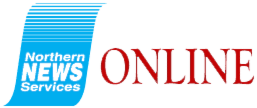Though it's still early days for Yellowknife's fall municipal election, if all current female candidates win, the city will fall below UN targets of 30 per cent women's participation in politics.
Across the NWT, gender representation looks wildly different depending on the community. Some communities, including Behchoko and Ulukhaktok boast gender parity. Others municipalities, like Enterprise have one sitting official who is a woman.
The Status of Women Council of the NWT is doing preliminary work to attract female candidates interested in putting their names forward, said Louise Elder, the council's executive director.
“Our ultimate goal here is to have 50-50 representation at all levels. We're beyond campaign schools now. We're trying to determine if there are ways in the North to reach out to women.”
The Status of Women Council is working to connect interested female candidates with mentorship and resources that will enable them to seek nomination, said Elder.
The Canadian Federation of Municipalities is working to achieve 30 per cent representation across Canada by 2020, and eventually gender parity for “true equality,” said Elder.
“I'm hoping between now and the election, that we see more women put their name forward,” said Elder. “We certainly don't want fewer women on council. We want more.”
Increased political engagement and representation will create “more women friendly communities at all levels,” she said. “If we're not there, we're not informing the decisions or shaping the processes and our lives. Someone else is making those decisions for us.”
Organizations like the Federation of Canadian Municipalities (FCM) are trying to even out those numbers, as it considers raising its own targets from 30 to 50 per cent, said Jenny Gerbasi, president of the federation and a sitting councillor for the City of Winnipeg.
As municipal elections kick off across the country, “there is a real opportunity to encourage more women to enter the political arena and help break down those gender barriers," said Gerbasi.
"When women are there, we see at the table, you have a diverse and better representation of the public in who is governing, you have better government. That's really what this is about," said Gerbasi.
Candidates are more likely to come forward “where they can see themselves in others," she said.
This fall, Coun. Shauna Morgan will seek a second term, and two-term councillor Coun. Rebecca Alty has announced her mayoral intentions.
Coun. Linda Bussey will not seek re-election in October.
On a territorial level, many sitting MLAs have held positions in community government.
MLAs come from diverse backgrounds of experience. What unites a wealth of territorial politicians, however, is their background in community and municipal governments.
MLAs and ministers with community government experience include Kevin O'Reilly, Alfred Moses, Robert C. McLeod, Cory Vanthuyne, Frederick Blake Jr., Louis Sebert and Daniel Mark McNeely.
MLA Shane Thompson sat on education boards, and MLA Herbert Nakimayak was the elected vice president of the Inuit Circumpolar Council.
Inspired to elevate women to positions of power, the Campaign Schools for Women expanded from their initial vision of bringing more women into the legislative assembly, and shifted focus toward municipal governments and school boards, said Minister Caroline Cochrane.
Both current female territorial MLA's have sat on numerous boards and social advocacy organizations. Green started as public broadcaster and eventually joined the YWCA to work with women, families and children in need. Minister Caroline Cochrane worked extensively in the non-profit sector, including as CEO of the Yellowknife Women's Society and Centre for Northern Families.
At the municipal level, approximately 60 per cent of local governments have at least 30 per cent representation on council, said Elder.
Once that target goes to 50 per cent, “we've got a lot more work to do,” she said, adding that governments with gender parity make up 30 per cent of municipalities.
“As a woman I want my voice to be represented at the table. Approximately 50 percent of the population is women. At least 50 per cent of our representation should be women,” she said.
“We need to be at the table so that we can inform the decision making and all levels of government, and the programs and services that are offered,” she said.
Women face different barriers to public office, including less financial wherewithal, different childcare demands and concerns about being trolled in social media, she said.
“Running for office, you really put yourself out there. (Voters) may not have the same confidence in women even though we deserve it,” said Elder.
Running for public office takes money, confidence and clarity on what the job is, she said.
Women who reach office often have to work “twice as hard as the men to gain their confidence to show (people), 'I will represent you, I'll be a candidate, I'll do an excellent job,'” said Elder.
“That's where the potential of mentoring is huge. If you can reach out to a woman who's done it and they have tips, they can support you,” she said.
